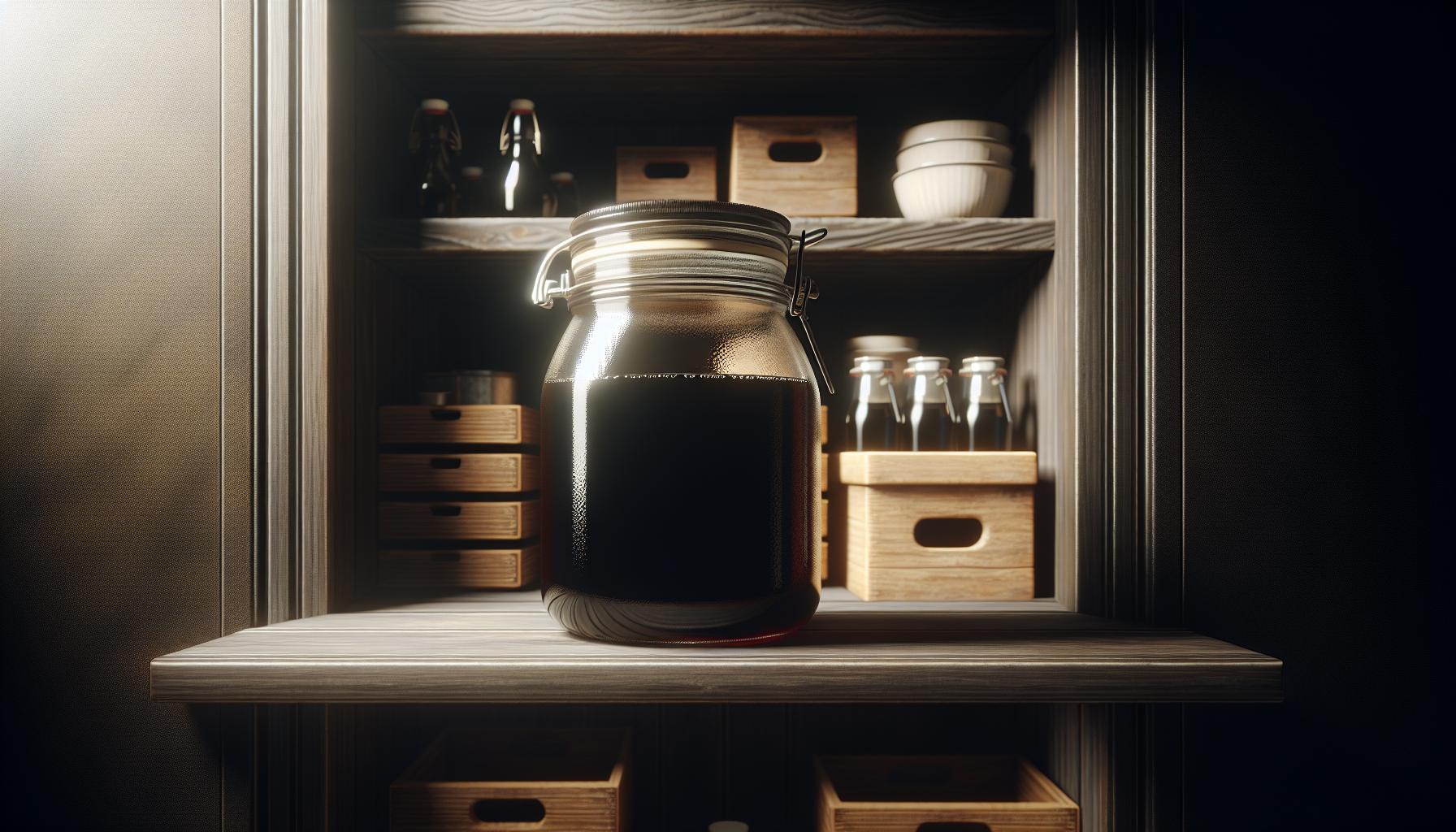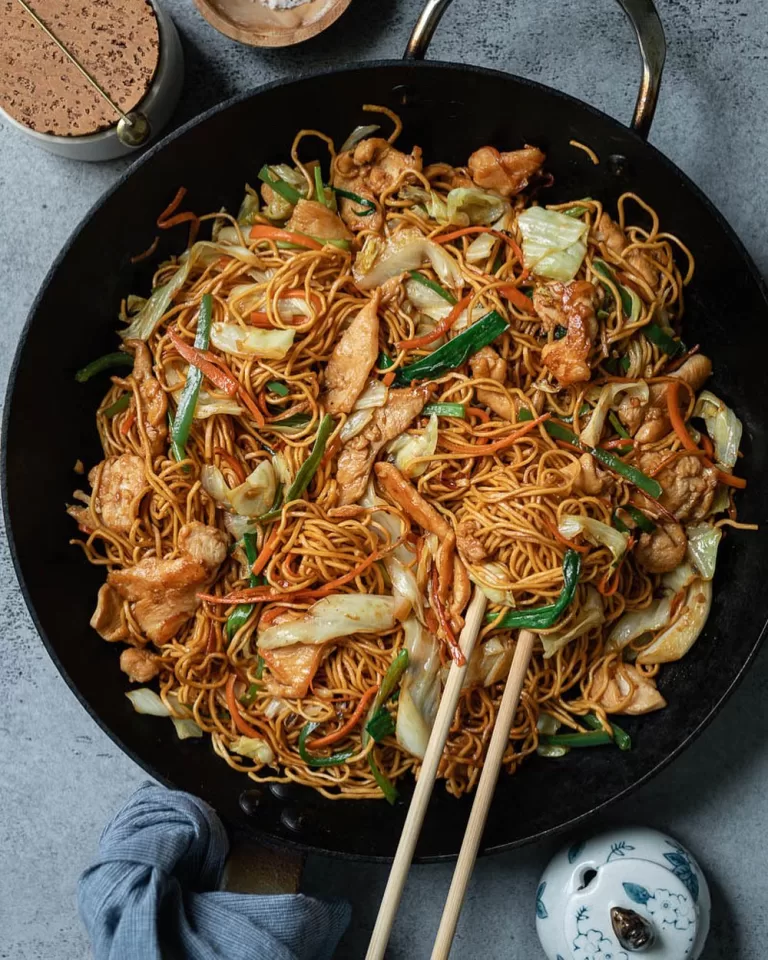Mastering Homemade Chinese Black Vinegar Recipe and Expert Storage Tips

Understanding Chinese Black Vinegar
Chinese black vinegar, or “Chinkiang” vinegar, is a culinary gem. It’s a staple in authentic Chinese cuisine, noted for its rich, bold flavor profile that adds intrigue to any dish. This vinegar bears a complex smokey taste, surprising hints of sweetness, and with a tart aftertaste to balance it all.
Using Chinkiang vinegar in your recipes can transform average meals into memorable dishes. Homemade Chinese black vinegar can even surpass the store-bought versions. But what’s even better is that it’s undoubtedly simple to make.
Navigating the realm of Chinese black vinegar is an insightful culinary journey. It begins when you realize that making it at home can open up a world of cooking opportunities, from dipping sauces to stir-fry or soup enhancement.
The magic lies in the right vinegar base, typically a grain such as rice, wheat, or millet. Then, it’s all about fermentation. The grains are fermented slowly over time, allowing for the development of a rich and potent flavor. This is the point where you can get experimental, adding unique ingredients to give your Chinese black vinegar an extra-oomph. From black soybeans to jujube fruits, options are boundless.
Dabbling in homemade vinegar is more than a culinary project. It’s a transformative process that includes monitoring the fermentation, noticing subtle shifts in color, and eagerly anticipating perfect acidic levels. It also means reaping the satisfaction of incorporating your homemade, uniquely flavored vinegar into your recipes.
When talking nutrition, Chinese black vinegar doesn’t fall behind. It’s a low-calorie addition to your dishes, while also providing some trace nutrients. Here’s a peek at what a tablespoon of Chinese black vinegar has to offer:
| Nutrient | Quantity |
|---|---|
| Calories | 5 |
| Carbs | 1 g |
| Protein | 0 g |
| Fat | 0 g |
Keep in mind that its strong flavor means you won’t likely be using much of it at a time. Thus, it smartly enhances your dishes without significantly impacting your daily nutrient intake.
Ingredients Needed

Let’s dive right into the ingredients needed for homemade Chinese black vinegar. You’ll find that these ingredients are simple and readily available. Not to mention, preparing them is part of the fun, leading to a unique and powerful condiment.
For the basic vinegar, you’ll need:
- Uncooked white rice or glutinous rice (1/2 cup). This serves as a base for your vinegar. If you’re opting for a more intense flavor, glutinous rice is your best bet.
- Water (2 cups). Use filtered or purified water, as tap water can contain unwanted chemicals that can inhibit the fermentation process.
- Mother of vinegar or raw unpasteurized vinegar (1/2 cup). This kick-starts the fermentation process with a healthy batch of acetic acid bacteria.
For that extra kick and uniqueness, let’s explore some less common ingredients:
- Black soybeans (1/2 cup). These can infuse your vinegar with a deep color and bolder flavor
- Jujube fruits (quarter cup). These little gems add a sweet and fruity touch to your vinegar.
Adding these ingredients isn’t typical, but it’s an adventurous spin on traditional recipes, leading to an unforgettable flavor.
| Ingredient | Amount | Notes |
|---|---|---|
| Uncooked rice | 1/2 cup | Use either white rice or glutinous rice |
| Water | 2 cups | Preferably purified or filtered |
| Mother of vinegar | 1/2 cup | Or raw unpasteurized vinegar |
| Black soybeans | 1/2 cup (optional) | Deepens color and boldens flavor |
| Jujube fruits | 1/4 cup (optional) | Adds a sweet, fruity touch |
Understanding the nutritional aspects can also enhance your recipe experience. With Chinese black vinegar, you’re adding a low-calorie addition with trace nutrients. For example, a tablespoon of vinegar tends to have under 20 calories and 1 gram of carbs. Not to mention, the sour taste of vinegar can help you cut down on salt in your dishes. So, it’s not just about the flavor, it’s a smart choice for your meals and for your health.
Step-by-Step Instructions

Starting your homemade Chinese black vinegar can seem daunting but follow these steps and you’ll find it’s more straightforward than it appears.
Step 1: The Preparation
First, grab your ingredients. You’ll need 2 cups of uncooked white or glutinous rice, 4 cups of water, and a tiny bit of mother vinegar to start the fermentation process. If you wish, add in 1 cup of black soybeans, and a handful of jujube fruits to layer in additional flavor.
Step 2: The Mixing
Combine your rice and water in a suitable container, making sure it’s kept in a dark, moderately warm environment. The rice should be submerged, not floating on the surface.
Step 3: The Waiting Game
Let the mixture sit undisturbed for the first 24 hours. This allows the rice to release its sugars, kickstarting the fermentation.
Step 4: Introducing Mother Vinegar
After the initial 24 hours, stir in the mother vinegar. This will accelerate the fermentation and eventually give your solution its tangy flavor.
Step 5: Regular Stirring
For the next week, you’re tasked with stirring the mixture daily. This daily engagement helps promote growth of the vinegar bacteria all around the vessel.
Step 6: Sieving
At the end of the week, strain the liquid off and leave the solids behind. Your liquid is now called ‘rice wine’.
Step 7: The Transformation
Leave your rice wine for another 3 weeks, stirring it occasionally, and it’ll transform into Chinese black vinegar.
Remember – patience is key here. Fermentation isn’t a swift process. It’s the slow and steady progression that adds complexity and depth to the vinegar.
Finally, an interesting tad of information – if you’re conscious about your nutrition intake, Chinese black vinegar is a wise choice. Its low calorie content and trace nutrients help enhance your dishes while reducing unnecessary salt intake. Light on the palate and beneficial for health!
Now that you have the step-by-step guide, why not start brewing your own vinegar? It’s an enriching process and the end product adds a unique flavor-profile to your dishes.
Fermentation Process

Let’s dive into the fascinating process of fermentation. Transforming a simple mixture into a flavorful, depth-filled condiment isn’t an overnight gig. It demands patience and precisely measured ingredients.
Kickstart the process by mixing your pre-prepared rice and water mix. Your key proportion here: a half cup of cooked rice to half a cup of water. Stir it conscientiously in your chosen fermentation pot. Keep everything as natural as possible and be sure about your pot; plastic doesn’t make the cut.
You’re waiting for fermentation to kickstart. This is a game of patience and a little bit of faith. The reaction of the mixture with ambient microbes sets off the process. Bear in mind it might take upwards of two weeks for visible signs of fermentation – bubbles and froth.
Now it’s time to add the mother vinegar. She’s the boss here – think of her as your flavor catalyst. For every liter of the mixture, you’re adding a fourth of a liter of mother vinegar. Stir it every day for the next week, ensuring all components interact perfectly.
Here’s where sieving comes in. This might sound given but do not throw away the solids. These are nutrient-filled left overs, so save ’em up for sauces, marinades or even seed starters!
Hang on, because more patience is required. The transformation into the much-awaited Chinese black vinegar takes several weeks more. You’ll notice the vinegar darkening and the taste deepening.
Your Chinese black vinegar is now ready to statisfy your culinary needs. Remember, its nutritional benefits pack a punch while reducing the salt count in your dishes. It’s teeming with trace nutrients, and it’s low on calories.
Here’s a simplified table to recall the recipe.
| Step | Ingredient | Amount |
|---|---|---|
| Mix | Cooked rice, Water | 1:1 (half cup each) |
| Check for fermentation signs | No added ingredients | – |
| Stir in Mother vinegar | Mother vinegar | 0.25 liters per liter |
| Sieve and wait | No additional ingredient | – |
Remember, this vinegar is well worth the wait.
Storage and Usage Tips

Your homemade Chinese black vinegar is a powerhouse of flavor and a remarkable addition to your pantry. However, to ensure you make the most of it, it’s important to store it correctly. Utilize a glass, ceramic, or food-grade plastic container for storage. Avoid aluminum and unlined iron containers as they’ll react with the vinegar, leading to unfavorable flavors or product spoilage.
Make sure you’re keeping your vinegar away from heat, light, or drastic temperature fluctuations. For the longest shelf life, store it in a cool, dark place like a pantry or cabinet. This storage method will slow down oxidation, a process that can gradually degrade the color, flavor, and nutrient quality of your vinegar over time.
Take care in your daily use of vinegar. Remember to always use clean utensils when serving or measuring your vinegar. This ensures no rogue bacteria or yeasts are introduced, which could potentially upset the finely balanced microbiome inside the vinegar. Tailor the strength of flavor by adjusting dosage in your dishes. Lesser amounts provide a gentle tang, while more generous portions can give a sharp, robust acidity.
Your homemade black vinegar isn’t just for culinary use. Beyond the kitchen, it can serve as a fantastic home cleaner. Its natural acidity can help dissolve mineral deposits and cut through soap scum. It can also function as a natural weed killer when generously sprayed on unwanted plants in your yard.
Now that you have your fermentation system in place and your storage and usage techniques honed, the possibilities are endless. The more you use your homemade Chinese black vinegar, the more you’ll discover its versatility and the amazing depth of flavor it imparts. Once you get comfortable with it, don’t shy away from experimenting with it in nontraditional ways. Whether in marinating, pickling, or even in a cocktail, your homemade black vinegar is a culinary tool waiting to be utilized.
Conclusion
Now you’ve got the knowledge to make and store your own Chinese black vinegar. Remember, the right storage is key to preserving its rich flavor and color. Don’t be afraid to experiment in the kitchen. Whether you’re adjusting the tanginess in your dishes or using it as a natural cleaner, the possibilities are endless. This versatile ingredient brings a unique depth of flavor to any culinary creation. So go ahead, make your homemade Chinese black vinegar and explore its myriad uses. You’re not just adding a new recipe to your repertoire, you’re unlocking a world of flavors.





